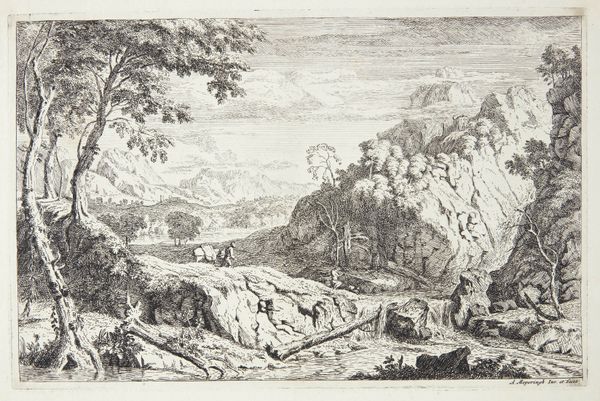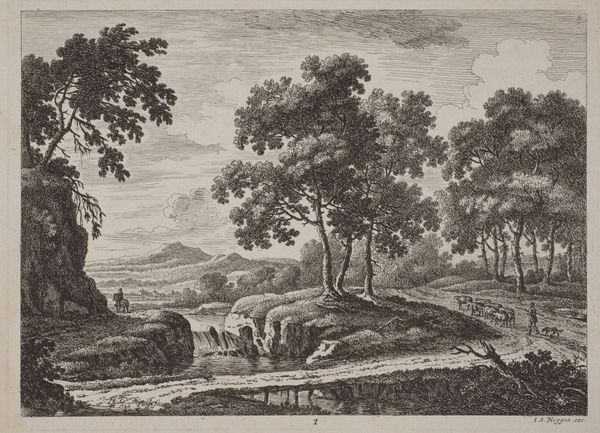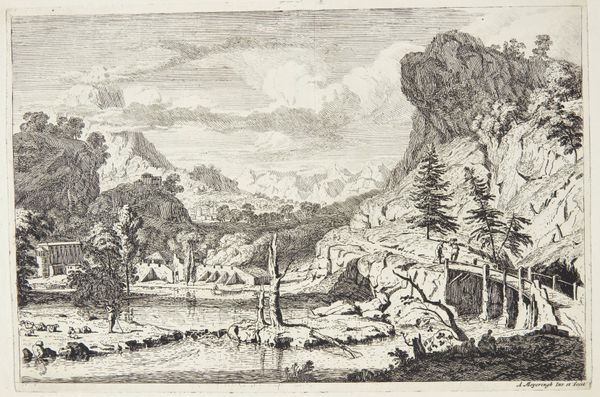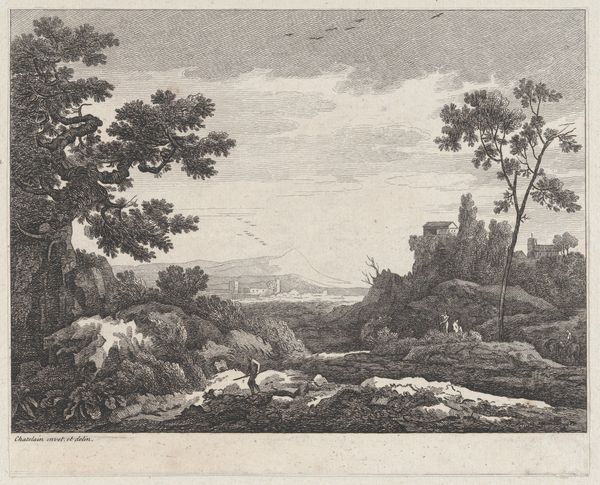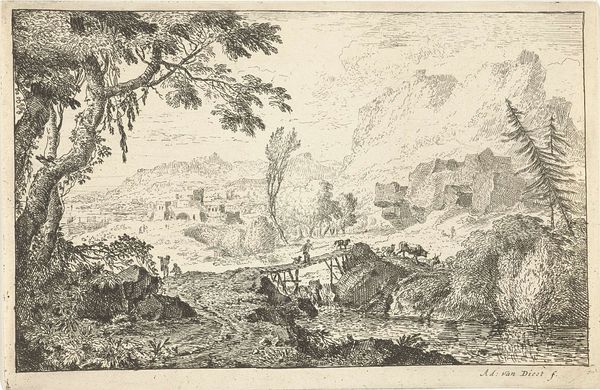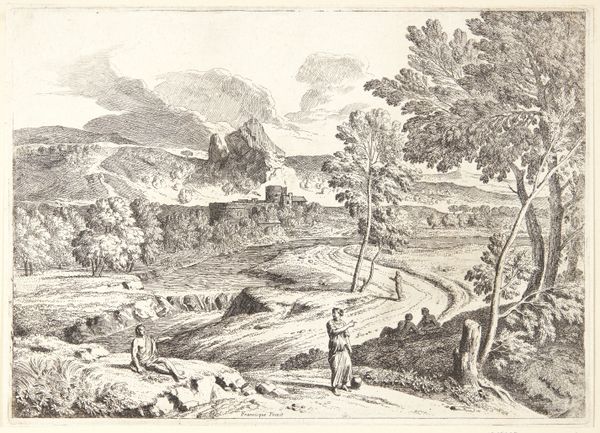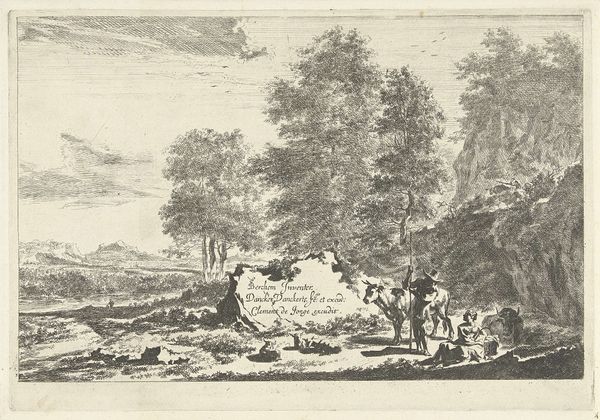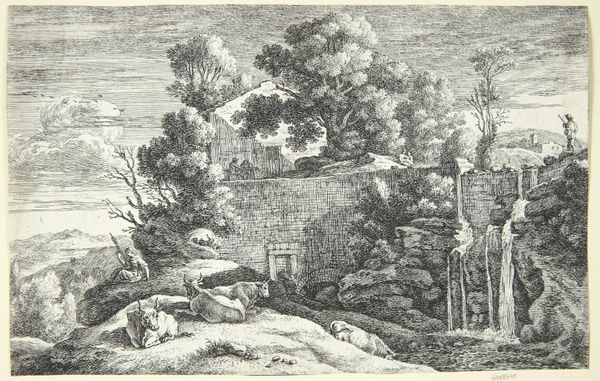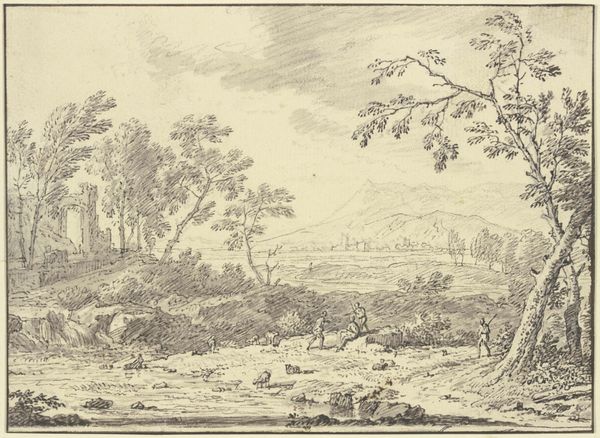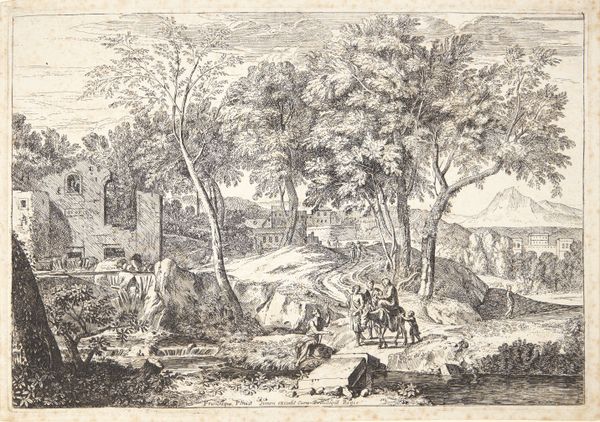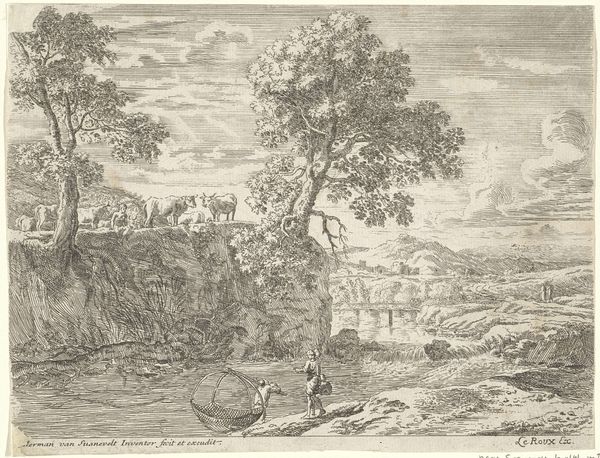
drawing, print, etching
#
drawing
#
ink drawing
#
baroque
# print
#
etching
#
landscape
Dimensions: 213 mm (height) x 320 mm (width) (plademaal)
Curator: The work before us is “Fløjtespillende hyrde ved et monument,” or “Flute-Playing Shepherd by a Monument,” created by Albert Meyering sometime between 1645 and 1714. Executed in etching, it embodies the Baroque aesthetic with a pastoral sensibility. Editor: My first impression is one of subdued melancholy. The light seems filtered, and even though it depicts an outdoor scene, it evokes a certain inward contemplation, perhaps because of the delicate, almost hesitant, linework. Curator: Absolutely. The pastoral scene—the shepherd, the grazing animals—conjures classical ideals of leisure and harmony with nature. But, as the title suggests, there's that prominent monument, which casts a shadow, both literally and metaphorically, across the image. Editor: The monument is strategically placed on the left, acting as a compositional anchor. Note how the eye is drawn from the detailed foreground, with its textured earth, up to the smooth surface of the monument, before drifting into the less-defined landscape beyond. Curator: Right. The monument itself becomes a symbol of time, memory, even mortality, doesn't it? The shepherd's flute music, traditionally associated with idyllic pleasure, is here juxtaposed with this imposing reminder of human impermanence. One must wonder about its specific placement within this vista, a statement perhaps on how time treats even nature. Editor: The monument, with its decorative urn, might be an allusion to vanitas, or the transience of life. We have these layers of symbolic encoding at play here. Furthermore, Meyering uses the etching medium to create subtle gradations of tone, intensifying the scene’s evocative nature. Curator: I agree. This work demonstrates the Baroque love of layered meaning. The etching medium, with its fine lines and subtle shading, also invites close contemplation, prompting viewers to decode its cultural and historical resonances. It calls to mind the ongoing cycle of civilization. Editor: For me, Meyering’s skillful arrangement of forms and tonal balance in this piece underscores the importance of recognizing the complex interplay between the objective reality and subjective perception, or the power that subtle gradations offer the final image. Curator: Precisely. It's a quiet masterpiece, this etching, hinting at depths far beyond its initial visual appeal. Editor: Yes, and by carefully balancing the monument with natural motifs, Meyering reminds us of art's lasting capacity to engage us over great stretches of time.
Comments
No comments
Be the first to comment and join the conversation on the ultimate creative platform.

